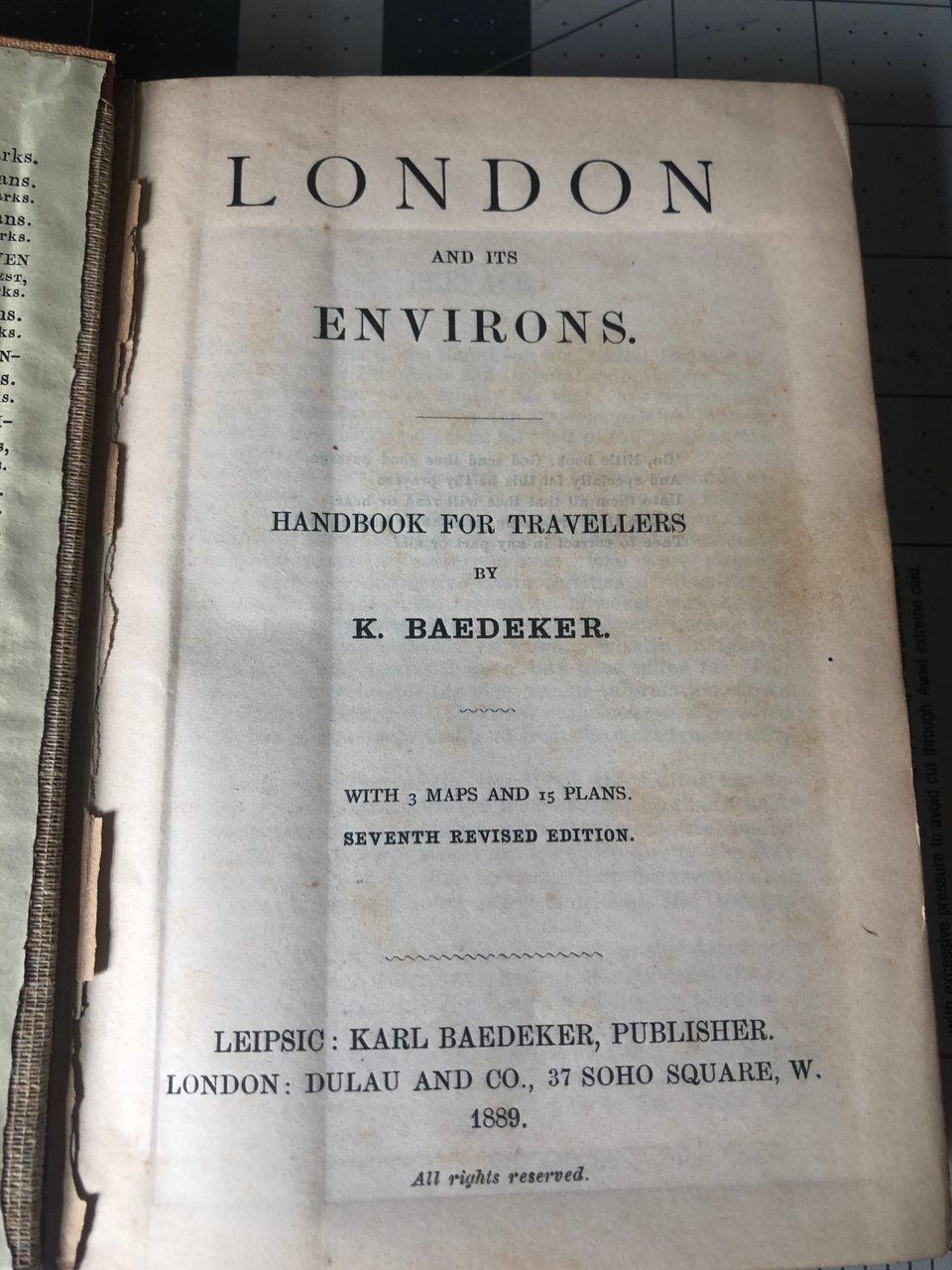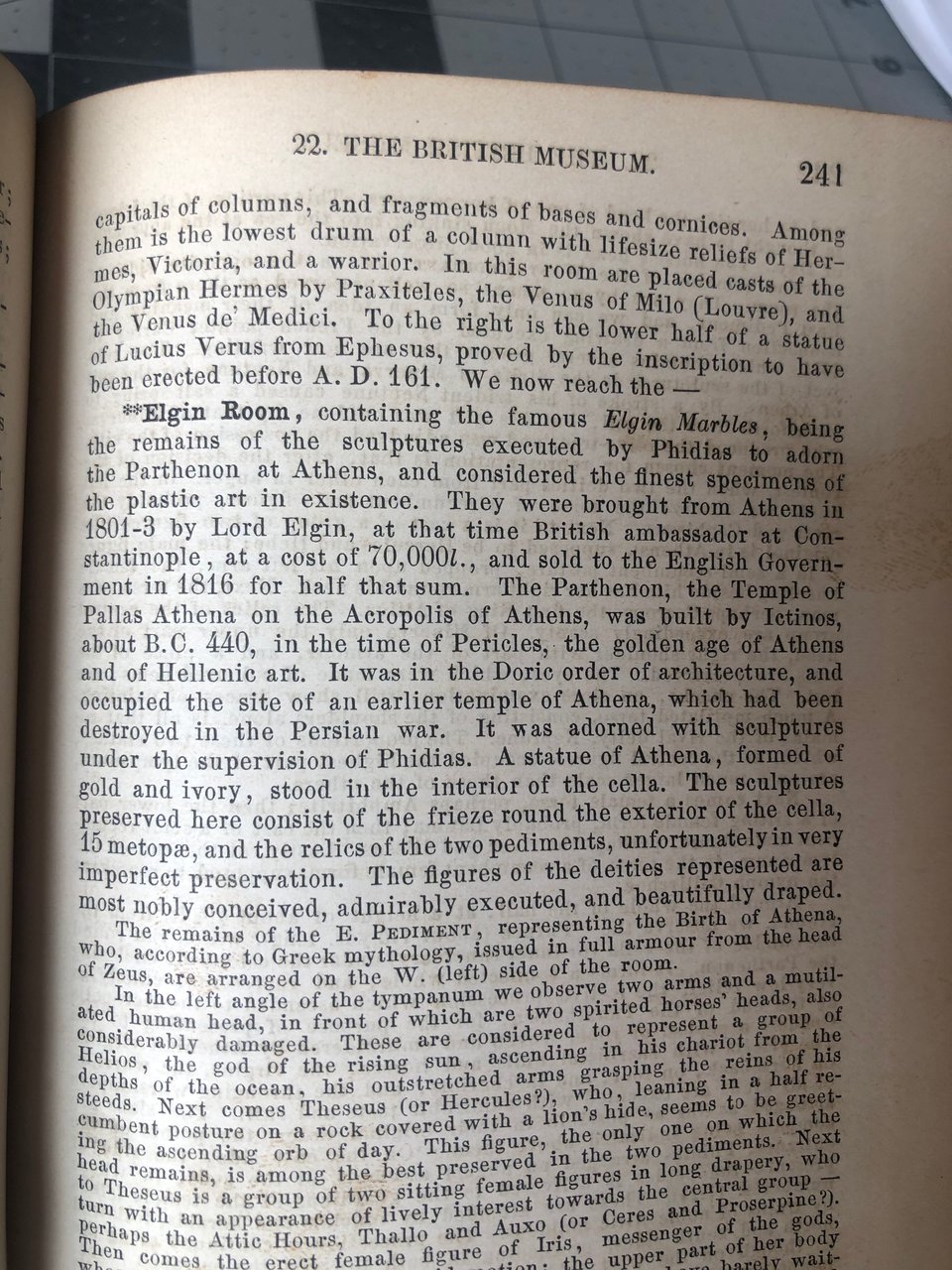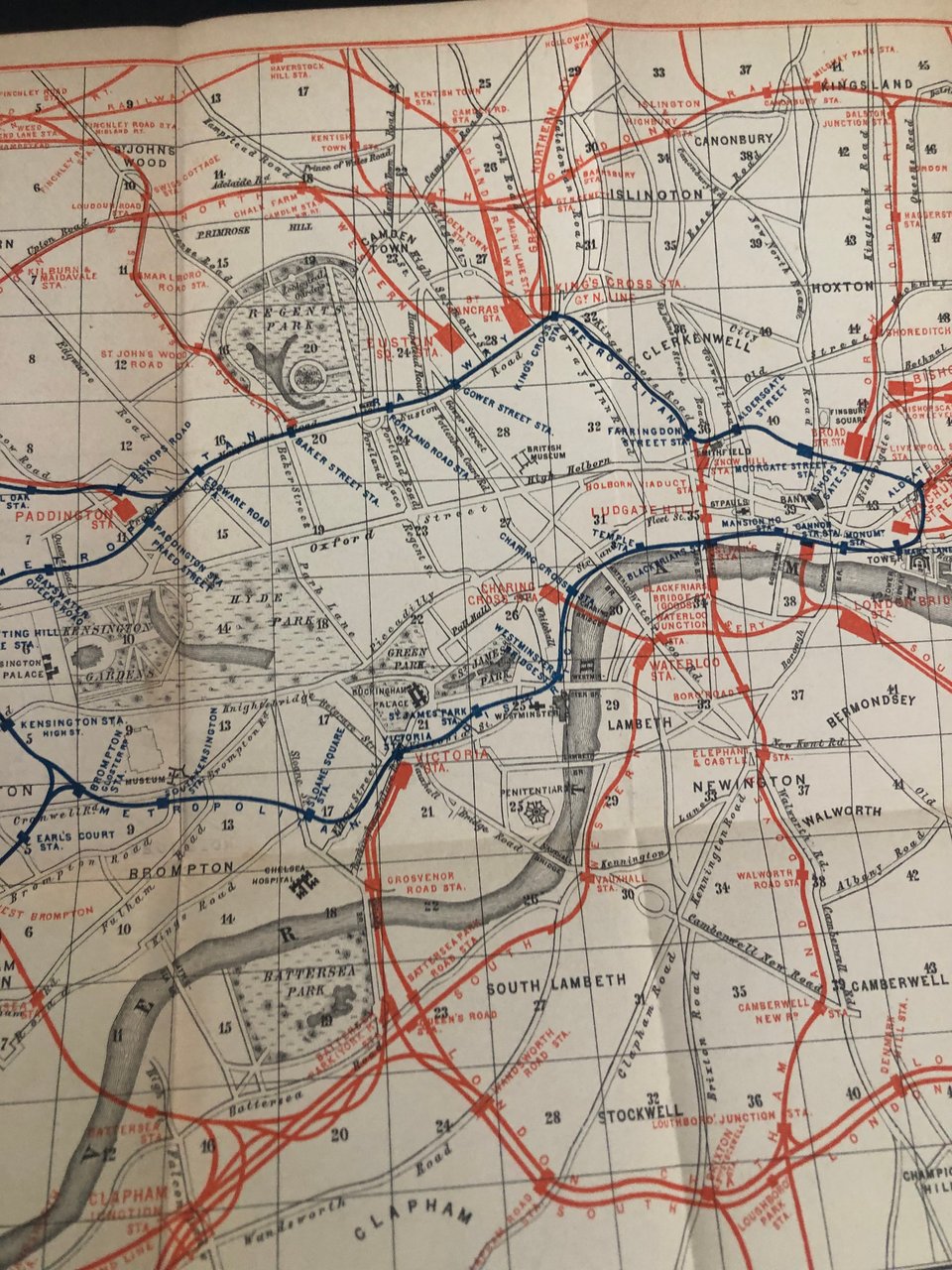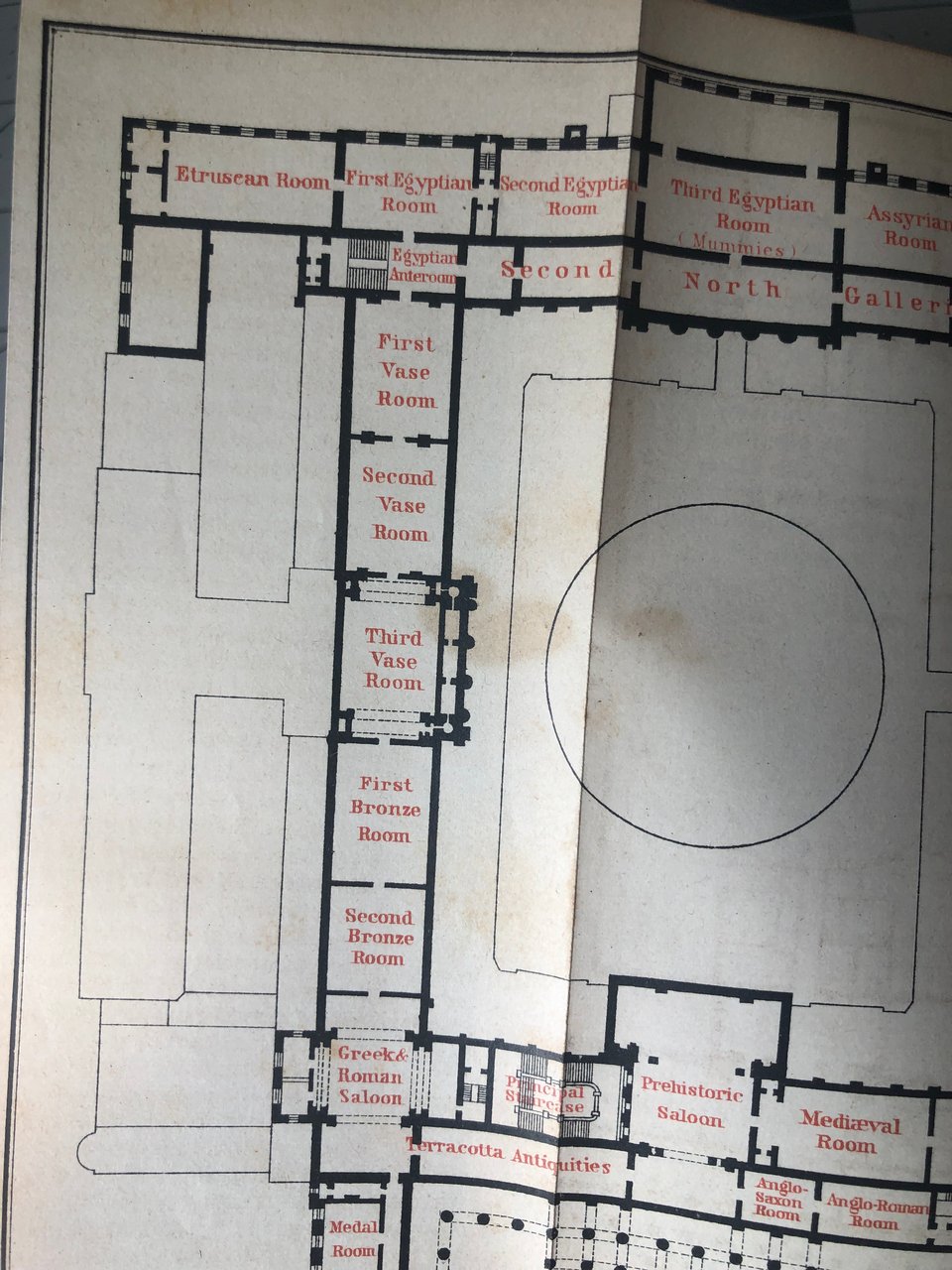it's for research! . . . really!
First: If you’d like to participate in my giveaway of three paperback copies of Andrea Lawlor’s funny and sharp Paul Takes the Form of a Mortal Girl, you can find the form for that here.
The point of this giveaway is to get more physical copies of queer books out into the world, where more people can access them and pass them along, so consider entering the giveaway if you have someone in your life you’d like to give this book to! or even a Little Free Library near you that you think needs more queer books in it!
I’m planning to do the drawing at the end of the week, but we’ll see how that goes!

On a recent trip to a used bookstore, I talked myself into buying an 1889 copy of Baedeker’s London and its Environs. It was $25! It was for research! (The book I plan to set partly in London 1. takes place in 1822 and 2. won’t be ready to start drafting until 2028, at the earliest.)

Karl Baedeker, who was born in Essen, Germany in 1801 and died during a trip to Egypt in 1859, was a pioneer in the writing of convenient, detailed, methodical travel guides, with included fold-out maps and extensive information on customs (both of the monetary and mannerly sorts), transport, history, dining, and accommodations. While they are still published today, I first learned about them from Elizabeth Peters’ historical Amelia Peabody mysteries, in which our intrepid Victorian heroine sets out to explore Egypt with a Baedeker guidebook in hand.
The book I now possess is a fascinating historical document, from the inside of the front cover, advertising Baedeker’s other guides available at the time (perhaps most poignantly at this moment, Palestine and Syria, with 18 Maps, 43 Plans, and Panorama of Jerusalem, and 10 views, published 1876) to the multicolored railway map of the city glued inside of the back cover. Overall it is a glimpse into a time not only before the ease of looking something up on the internet, but before one could even expect that an institution like the British Museum would have adequate signage or people available to explain the items on display.

The guide is split into an introduction, in which the British system of money is explained, the available routes to and from London (thirteen different steamer lines are recommended from North America to England, each running from weekly from New York, Boston, Halifax, Philadelphia, Montreal, mostly docking in Liverpool. A basic return ticket would run you in the neighborhood of $120 — more than $3000 in modern dollars), hotels, restaurants . . .
There are entries for oyster shops, tea merchants, toy makers, umbrellas and parasols, wine merchants, pianoforte-manufacturers, chemical apparatus, and agricultural implements. However, no cheesemongers are listed (“Old Cheshire Cheese” is, alas, the name of restaurant where one may acquire a beefsteak pudding on Sundays.) Early coffeeshop chains at the time include Lockhart’s Cocoa Rooms and the Aerated Bread Company.
The omnibus lines and major train stations are explained briefly, with the addendum of color-coded maps which fold out of the back of the book.

Ah, but the competent traveler must also be familiar with the historical underpinnings of the place which they visit! To that end, we are treated to an extremely brisk rundown of every British monarch Baedeker consider worth mentioning (Alfred the Great gets a shoutout; Offa of Mercia does not) and a five-page historical summary of London, which mentions the Romans, the Great Fire of 1666, and Christopher Wren, all in minute font.
One is tempted to wrangle the prices into modern dollars. Baedeker assures us that a luxurious stay in London will cost us 30-40 shillings a day (20 shillings to a pound, if you will recall), but taking some small economies will allow one to keep the daily expenses down to 15-20 shillings per day. The Bank of England inflation calculator informs us that 1 pound in 1889 is worth about £110.76 these days ($150 USD.) (That is quite affordable, by today’s standards of traveling in London, where even a single room in a youth hostel with a shared bathroom runs at least £100. By the standards of the time, however, when an agricultural laborer in England might make £41 in a whole year, or in other words need to stretch the same amount Baedeker’s economical traveler is spending in a single day over an entire week — see page 35 of this book published in 1900 — it’s also not affordable at all.)
Churches (including Swedish-language and Italian Catholic) and synagogues are listed, including a German-language one, but not mosques or Hindu temples. The internet is a little vague on how many South Asian people would have been in London at this time, but likely upwards of 5000.
The tone is extremely Germanic. I originally falsely attributed the writer/editor a sense of humor by labeling numerous significant institutions and locales “without interest,” but I now realize my error: they are efficient.
The majority of the book is dedicated to the sites of London, organized by geographic proximity to one another. Each site is laden with facts and trivia which a nerd would like to know. For example, about the Office of the Times:
Tickets of admission [to the Printing Office] are issued on written application to the Manager, enclosing a note of introduction or a reference. Visitors should be careful to attend at the hour named in the order, when the second edition of the paper is being printed. No fewer than 20,000 copies can be struck off in an hour by the wonderful mechanism of the Walter press, and about 70,000 are issued daily. The continuous rolls or webs of paper, with which the machine feeds itself, are each 4 miles in length, and of these 28 to 30 are used in one day. The finished and folded copies of the Times are thrown out at the end of the machine. The type-setting machines are also of great interest. The official who conducts visitors round the works explains all the details (no gratuity.) The electric light is used in the office. The Times celebrated its centenary in 1884.
I love every word of this. I would have been an absolute menace to my family if I had lived in 1889 and possessed a copy of Baedaker’s London and its Environs.

Again, there’s no assumption that there will be adequate signage in any of the sites they recommend seeing, even the public and purportedly educational. Thus, there are detailed maps of the British Museum, as well as the location of exactly what objects the visitor should be looking for in each gallery, not just the overall highlights of the whole museum.
One of the most striking cultural differences between this London guidebook and any London guidebook you might pick up now is who it’s written for. This isn’t a book for everyone and anyone; there’s an assumption that the reader will be middle class or better, able to provide references and relevant introductions. There is a long section on the private art galleries one might visit in the noble houses of Grosvenor Square, among them Stafford House, Grosvenor House, and Dudley House. While these collections were open to the public on fixed days, the Baedeker reader is advised to "[send] application for admission . . . to the Duke’s secretary.”
Lord, I miss traveling! I don’t know whether I will visit London again, but I am delighted all the same!

We are, as always, in difficult times.
I encourage you to focus on whatever thread most calls to you and which you are most able to do something about, but I want to draw your attention now to the way in which the violent attacks on immigrants in this country are used to justify an erosion of the rights of all citizens.
In the wake of the (ongoing!) LA protests against widespread and cruelly-executed ICE detentions in southern California — which, to be absolutely clear, have scooped up many legal residents and citizens of the United States — Republican senator Josh Hawley from Missouri has called for an investigation into immigrants rights organizations like CHIRLA, claiming that they are “bankrolling civil unrest.”
CHIRLA, or the Coalition for Humane Immigrants Rights of Los Angeles, is an organization founded in 1986 which fights for, among many other things, the civil liberties of asylum seekers, the labor rights of undocumented workers in the U.S., and the rights of undocumented children to do things like attend school. In other words, they are trying to protect some of the most vulnerable people in our country.
I have watched video after video of protesters in Los Angeles. People are afraid and angry because their neighbors, friends, and family members are being effectively disappeared with no legal recourse to challenge their detention and sometimes imprisonment. No one is paying them to show up — risking being shot by rubber bullets, trampled by police hoses, or tear gassed — and demand justice.
Hawley’s “investigation” is a pretty transparent attempt to keep citizens from exercising their First Amendment rights to protest, as well as a way to curtail donations to any organizations which provide legal support to immigrants, many of whom are having their civil rights violated. He wants to see full lists of donors and their contact information, which is extremely chilling in this political climate. I strongly suggest that you contact your federal representatives and ask them to refuse to support this attempt to snip away at our federal rights to protest and our human rights to support each other, regardless of citizenship status.
But I also ask that you be watchful and skeptical. A news source which I have found providing a humanizing view of what has been happening on the ground in LA is L.A. TACO, an organization covering local news and food (especially tacos.) I encourage you to find independent news sources close to where you are — for example, I subscribe to the New Bedford Light, which has reported in detail on immigration enforcement on the south shore of Massachusetts (and also has the daily fish auction prices.)
Thinking of all of you, and hoping for the best,
Sharon
Add a comment